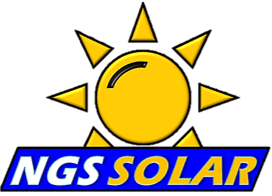Proudly Serving
New York City
Queens/Brooklyn/Bronx
Nassau/Suffolk County
FAQs
Ask About Our First Responder, Teacher, and Military Hero Program
First 4-Months of Solar Free
First Responder, Teacher, and Military Hero Program
Most Asked Solar Questions:
- What are Photovoltaics (solar electricity) or PV?
A Photovoltaic system (PV) is an arrangement of components designed to supply usable electric power for a variety of purposes, using the Sun.
- How can we convert electricity from the sun?
The sun’s light and all light contains energy. Usually, when a light hits an object the energy turns into heat, like the warmth you feel while sitting in the sun. But when the light hits certain materials the energy turns into an electrical current instead, which we can then harness for power.
- How does a Photovoltaic system work?
Sunlight on a photovoltaic module produces direct current (DC) electricity which is then converted to usable alternating current (AC) with the help of a device called an inverter. The inverter is then wired into your main service panel where it feeds the internal power grid.
- Can I really lower my electric bill by half or more?
YES!
- Can I use Photovoltaic system (PV) to power my home?
PV can be used to power your entire home’s electrical system, including lights, cooling systems, heating, and appliances. PV systems today are extremely versatile and offer a variety of installation options, they can be installed on just about any home.
- How do I determine the size of the system I’ll need?
The size of a solar system you need depends on several factors, such as the amount of electricity you use and the size of your roof and how much shade surrounds your home. Call us at NGS Solar and we can get you a customized quote.
- How big of a roof do I need?
The amount of roof space needed depends on the same amount of electrical energy needed. The best way to find out is to call us for a free custom design quote.
- What happens to my solar system on dark or cloudy days?
The PV systems of today work to seamlessly provide you with power. Unlike the early days of solar where systems had to be sized for peak loads, the system you’ll receive today is directly connected to the grid. Therefore, when it’s cloudy and your system doesn’t provide enough energy to support your uses, it will draw energy from the utility grid.
- I have plans to expand. Can I plan for this now?
During the process of designing and installing your system, we take into account the chance for growth plans in the future. The type of inverter we choose to install for you can depend on the near-term expectations of power uses and we might decide it’s best to include the excess capacity now rather than in the future. Using this strategy, we can simply add more modules later on when expansion does occur.
- What are the rebates available?
Available rebates vary each year depending on the funding for specific programs and the size of the solar energy system installed. We will give you the most up-to-date and accurate information when we meet with you based on applicable programs and the scope of the project in mind.
- My homes roof is in need of a replacement. Does it make sense to do both installations at the same time?
If you’re planning to replace your roof, it does make sense to complete both the roof installation and PV system installation at the same time. We can help you through that process as well.
- What are the maintenance procedures and costs?
Solar energy systems are solid-state technology; they have no moving parts and require little to no maintenance.
Financial Questions:
- What is the impact of PV systems on my property taxes?
Photovoltaic systems are exempt from your property taxes.
- I don’t own the home/I am a renter. Can I still install a PV system?
The owner of the property must be a part of the process and must grant permission for us to install on their property.
- I understand that I can make money back by selling power back to the utility. Can I be sure that this energy will be accurately accounted for?
The power you generate is always metered by your inverter. In addition, your utility meter measures the power in both directions; both the power you use and buy from the utility and the power you sell back to the utility for solar credits. On top of this, you can track the production of power from your PV system using our online monitoring system. Lastly, you’ll receive a monthly statement from the utility detailing the amount of energy you used by their means and the energy they bought back from your PV system.

Share On: